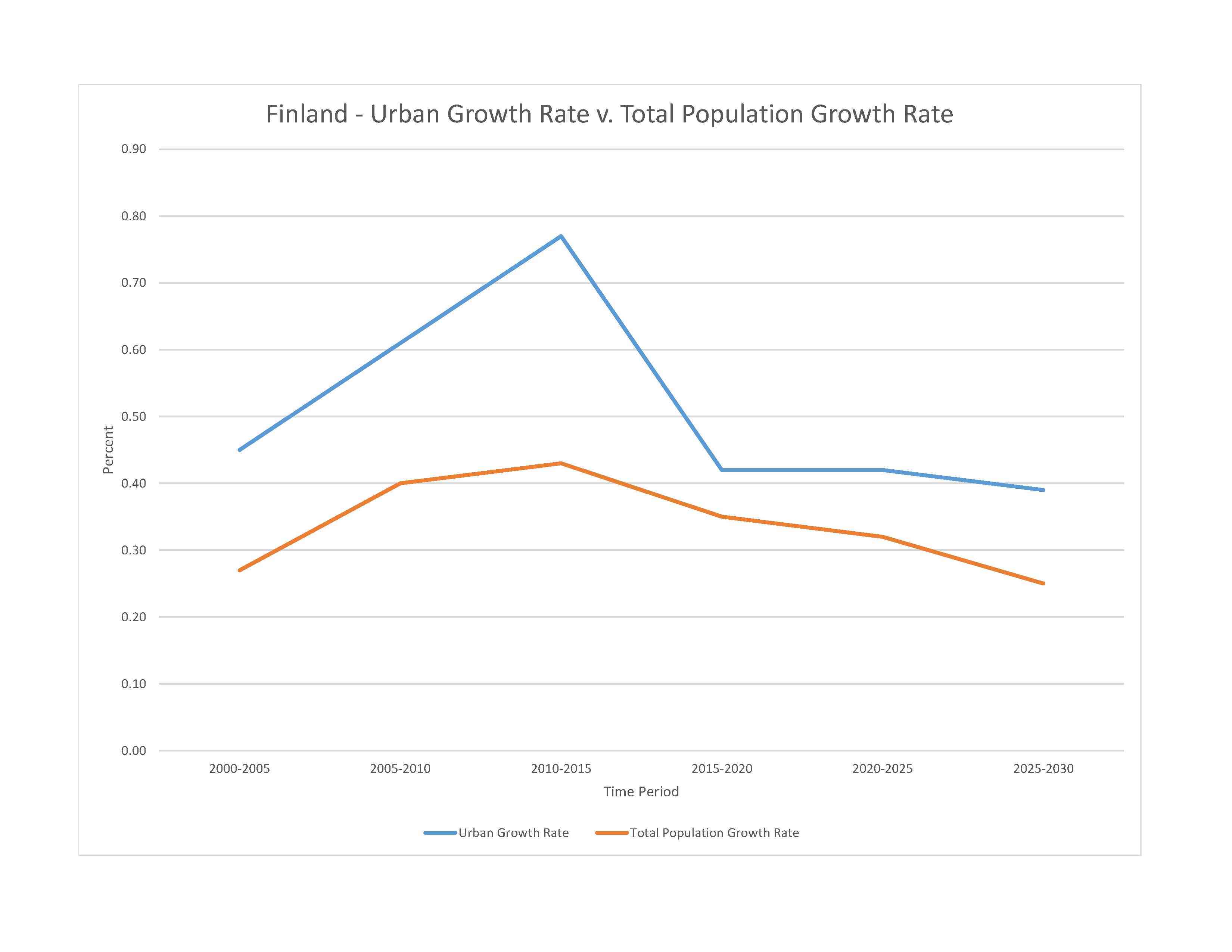
5,614,571 (2023 est.)
noun: Finn(s)
adjective: Finnish
Finnish, Swedish, Russian, Estonian, Romani, Sami
note: 90.9% of the population has a Finnish background (2022 est.)
Finnish (official) 85.9%, Swedish (official) 5.2%, Russian 1.7%, other 7.2% (2022 est.)
major-language sample(s):
World Factbook, korvaamaton perustietolähde. (Finnish)
The World Factbook, the indispensable source for basic information.
Finnish audio sample:
Lutheran 66.6%, Greek Orthodox 1.1%, other 1.7%, none 30.6% (2022 est.)
Finland has a relatively high fertility rate for Europe at about 1.75 children per woman in 2023. Finnish women have high labor force participation rates, and their educational attainment is higher than that of Finnish men. Finland’s family policy, like other Nordic countries, puts an emphasis on reconciling work and family life. Both parents can stay at home with an earnings-based allowance until the baby is about 11 months old. Finland also has a publicly subsidized childcare system. Alternatively, parents can choose to take care of a small child through home care leave with a flat allowance rate. These benefits have encouraged fathers to do a greater share of housework and childcare, although women still perform the lion’s share of domestic work. In other instances, women have reduced the burden of household work by outsourcing domestic chores, rather than men taking on more of the responsibilities. Finland has high family size ideals compared to other European countries, and childlessness and one-child families are not favored. The proportion of couples having at least three children has been growing since the 1970s.
Finland has historically been a country of emigration. In the 20th century, Finns emigrated largely in two waves. Before World War II, the majority of Finns went to North America, and after World War II most went to Sweden, where industrialization was generating much-needed jobs that offered higher salaries and a better standard of living. In the 1980s and early 1990s, Finnish returnees (mainly from Sweden) began to outnumber Finnish emigrants. Also arriving in Finland between April 1990 and 2010, were Ingrian Finns – descendants of ethnic Finns who settled near St. Petersburg, Russia, in the 17th century – who immigrated to Finland under the Right of Return Law. In addition, the country has absorbed immigrants from Russia, Estonia, the former Yugoslavia, and Sweden for a variety of reasons, most commonly for marriage and family reunification. Finland has also accepted refugees and asylum seekers from Somalia, Iraq, China, and Thailand.
0-14 years: 16.25% (male 466,311/female 446,015)
15-64 years: 60.5% (male 1,726,110/female 1,670,981)
65 years and over: 23.25% (2023 est.) (male 575,259/female 729,895)
total dependency ratio: 62.1
youth dependency ratio: 25
elderly dependency ratio: 37.1
potential support ratio: 2.7 (2021 est.)
total: 43.2 years (2023 est.)
male: 41.7 years
female: 44.8 years
0.22% (2023 est.)
10.3 births/1,000 population (2023 est.)
10.4 deaths/1,000 population (2023 est.)
2.3 migrant(s)/1,000 population (2023 est.)
the vast majority of people are found in the south; the northern interior areas remain sparsely populated
urban population: 85.8% of total population (2023)
rate of urbanization: 0.42% annual rate of change (2020-25 est.)

1.338 million HELSINKI (capital) (2023)
at birth: 1.05 male(s)/female
0-14 years: 1.05 male(s)/female
15-64 years: 1.03 male(s)/female
65 years and over: 0.79 male(s)/female
total population: 0.97 male(s)/female (2023 est.)
29.5 years (2020 est.)
8 deaths/100,000 live births (2020 est.)
total: 2.1 deaths/1,000 live births (2023 est.)
male: 2.3 deaths/1,000 live births
female: 1.9 deaths/1,000 live births
total population: 82 years (2023 est.)
male: 79.1 years
female: 85 years
1.74 children born/woman (2023 est.)
0.85 (2023 est.)
85.5% (2015)
note: percent of women aged 18-49
improved: urban: 100% of population
rural: 100% of population
total: 100% of population
unimproved: urban: 0% of population
rural: 0% of population
total: 0% of population (2020 est.)
9.6% of GDP (2020)
4.64 physicians/1,000 population (2018)
3.6 beds/1,000 population (2018)
improved: urban: 100% of population
rural: 100% of population
total: 100% of population
unimproved: urban: 0% of population
rural: 0% of population
total: 0% of population (2020 est.)
22.2% (2016)
total: 8.23 liters of pure alcohol (2019 est.)
beer: 3.76 liters of pure alcohol (2019 est.)
wine: 1.59 liters of pure alcohol (2019 est.)
spirits: 1.96 liters of pure alcohol (2019 est.)
other alcohols: 0.91 liters of pure alcohol (2019 est.)
total: 21.6% (2020 est.)
male: 26.9% (2020 est.)
female: 16.3% (2020 est.)
N/A
57.2% (2023 est.)
women married by age 18: 0.1% (2017 est.)
5.9% of GDP (2020 est.)
total population: NA
male: NA
female: NA
total: 19 years
male: 18 years
female: 20 years (2020)
NOTE: The information regarding Finland on this page is re-published from the 2024 World Fact Book of the United States Central Intelligence Agency and other sources. No claims are made regarding the accuracy of Finland 2024 information contained here. All suggestions for corrections of any errors about Finland 2024 should be addressed to the CIA or the source cited on each page.
This page was last modified 04 May 24, Copyright © 2024 ITA all rights reserved.